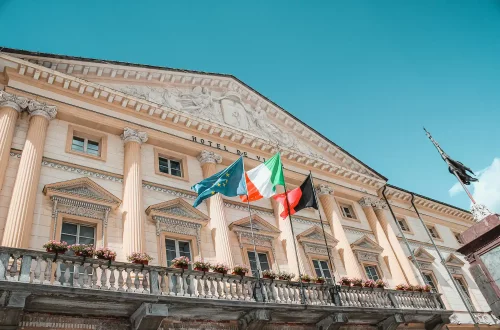For many, tracing their lineage back to Italy is more than just a curiosity—it’s a journey to reclaim their heritage and, in some cases, obtain Italian citizenship. At the heart of this quest lies the retrieval of essential documents, particularly Italian birth records. These documents not only serve as a testament to one’s ancestry but are also crucial in the legal process of citizenship application. However, when these records need to be used outside of Italy, for instance, in the United States, they often require official translation into the local language to be accepted by authorities. This translation of Italian citizenship documents ensures that all legal and procedural aspects are clearly understood and adhered to, thus smoothing the path to citizenship.
Retrieving the documents
Italian records
The hunt for these vital documents can be a daunting task, especially given the historical context in which they were created. In the past, birth records were meticulously handwritten and stored in local comunes (municipalities). Unlike today, where digital records can be easily accessed, these documents were preserved in physical form, often requiring a visit to the commune to locate them.
To start your search, it’s essential to gather as much preliminary information as possible—names, dates, and places of birth. With this information in hand, you can approach the registry office of the Italian municipality where the vital records were registered. Many municipalities now have online portals or contact information available, making the initial request process more accessible. If the online route isn’t successful, you may also request these documents via mail, e-mail or phone.
Many old records may contain errors or incomplete information, so it’s crucial to verify the accuracy of these details. If any inaccuracies are found, these should be corrected directly with the municipality where the record was registered. This step is essential to ensure the integrity of your application and to avoid any potential issues during the citizenship process.
The timeframe for obtaining vital records after a request is typically up to six months. However, this period can vary based on the specific municipality and its current workload. Make sure to check with the local office for more accurate estimates.
U.S. records
As a general rule for U.S. citizens, you must seek for vital documents at the U.S. state’s Department of Health. However, old certificates might not be available at the Department of Health. Instead, you may need to retrieve them from state or municipal archives or directly from the town where the event occurred. Additionally, divorce decrees can be obtained from the court where the divorce was filed. Along with the divorce decree, a Certificate of No Appeal is required to confirm that no appeals were made following the final judgment. If a court is unable to issue this certificate, you may request a case summary instead.
When it comes to marriage certificates, these documents are equally important and can be obtained from the town or city where the marriage took place, or through the U.S state’s department of health. Just like with birth and divorce records, verifying the accuracy of these documents is vital, especially since any discrepancies can lead to delays or complications in your citizenship application. Marriage records often contain essential information about your ancestors, which can help build a more comprehensive family tree and validate the lineage necessary for citizenship.
In many cases, the U.S. state’s Department of Health provides multiple options for obtaining vital records. You can request them through mail or phone, or use VitalChek, an official platform through which you can obtain certificates. This flexibility ensures that you can access the necessary documents in the way that suits you best.
Understanding the documents
Once you have the documents in your possession, the next challenge is to understand what is written. These records, being historical artifacts, are not always straightforward. They are typically handwritten in Italian and may feature old-fashioned script, which can be difficult to read. Understanding these documents is crucial, not only for verifying the accuracy of the information but also for piecing together your family tree and ensuring all data aligns correctly with other documentation you might have.
In examining various Italian birth records, it’s noted that while forms differ across towns and eras, they share common elements such as the detailed recording of the year, day, month, hour, and minute of birth, often spelled out in full. An official statement typically follows, detailing the parents’ names, ages, occupations, and the circumstances of the birth, witnessed and attested by two locals. Signatures of the father, witnesses, and town officials are often present, though illiteracy sometimes required officials to note the inability to sign. By understanding an official document structure, you can proceed with its translation.
Items to watch out for
While these records are invaluable, they are not infallible. Many old documents contain errors or incomplete information, which can pose challenges during the citizenship process. Common issues include misspellings, incorrect dates, or missing data. It’s important to review the documents carefully and cross-reference them with other records to ensure consistency and accuracy.
If you do find errors, the next step is to contact the municipality to make corrections. This process may involve providing additional documentation or evidence to support the changes. It’s crucial to address these issues before proceeding with any translations, as inaccuracies can lead to complications or delays in your application. It is also important to highlight that you might need to hire a sworn translator, an official translator recognized by the Italian government to translate legal documents. Navigating the intricacies of Italian citizenship by descent can be overwhelming, but you don’t have to do it alone. io.citizen offers a comprehensive service that includes not only the search and retrieval of necessary documents but also their official translation. By choosing our services, you ensure that all aspects of your application are handled with precision and professionalism, giving you peace of mind and increasing your chances of a successful outcome.
Take advantage of specialized assistance to secure your passport for a borderless future.






